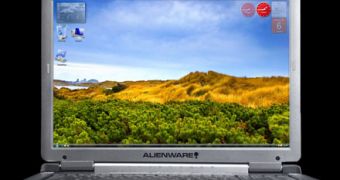Microsoft has responded to reports that Windows Aero, the much-touted graphical user interface integrated in Windows Vista, drains battery life. According to the Redmond Company, Aero only superficially impacts power consumptions and there are so many variables to consider that Aero cannot be blamed beyond a reasonable doubt.
Even before Windows Vista was available for the general consumers, Microsoft applauded the improved power management capabilities in the operating system. However, end users have expressed discontent when they found that Vista had fallen short of the initial promises.
"First off, yes, the Aero theme drives the GPU harder and therefore uses more power. But in the big picture, it's really not that much more. For example, the display on most laptops will consume somewhere between 15-25% of your "power budget" when you are running on battery. Nevertheless, in our testing we've seen that turning on Aero consumes only about 1-4% more of battery life. In terms of making your battery last longer, turning off Aero will not go very far while at the same time costing you some of the cool features that make Windows Vista fun to use, such as Flip 3D, taskbar previews, window transparency and so on," revealed Nick White, Microsoft Program Manager.
Windows Aero is the high-end expression of user experience when it comes to interacting with the operating system. It delivers transparency effects, Flip 3D, live thumbnails and animated transitions when switching windows, but all with a cost, in energy. Of course that this is a non issue for desktops, but laptops are hit severely, according to consumer complaints, as the Vista GUI drains battery life.
The basic comparison that is being made is between Windows Vista and Windows XP. On the same machine, users claim that Windows XP helps preserving battery life, a situation that is also valid for Windows Vista running without Aero. Still, with Windows Aero enabled, users have experienced a reduction of battery life.
HP and Lenovo have introduced their own sets of power management settings for Windows Vista copies running on laptops in order to increase the durability of the battery life. White did provide an example where Aero would deliver a heavy impact on the battery. According to him, transparent window borders and stacking windows over an area of the screen that plays a video fragment will cause the GPU to constantly re-ender the specific portion, therefore leading to increased power consumption.
"As an aside, I recently learned that testing the impact of software features on battery life is exceptionally tricky, even by benchmarking standards. A huge number of variables must be controlled for. In fact, something as simple as the way a battery is handled can introduce enough variability into testing to make it difficult to identify the true cause of any observed changes in performance or battery life. This is because the charge a battery requires can vary considerably based on, among other things, the battery technology (Li-poly, Li-ion, Ni-MH, etc.), how recently the battery was power-cycled, how old the battery is, and even the temperature of the battery when it was charged," White concluded.

 14 DAY TRIAL //
14 DAY TRIAL //